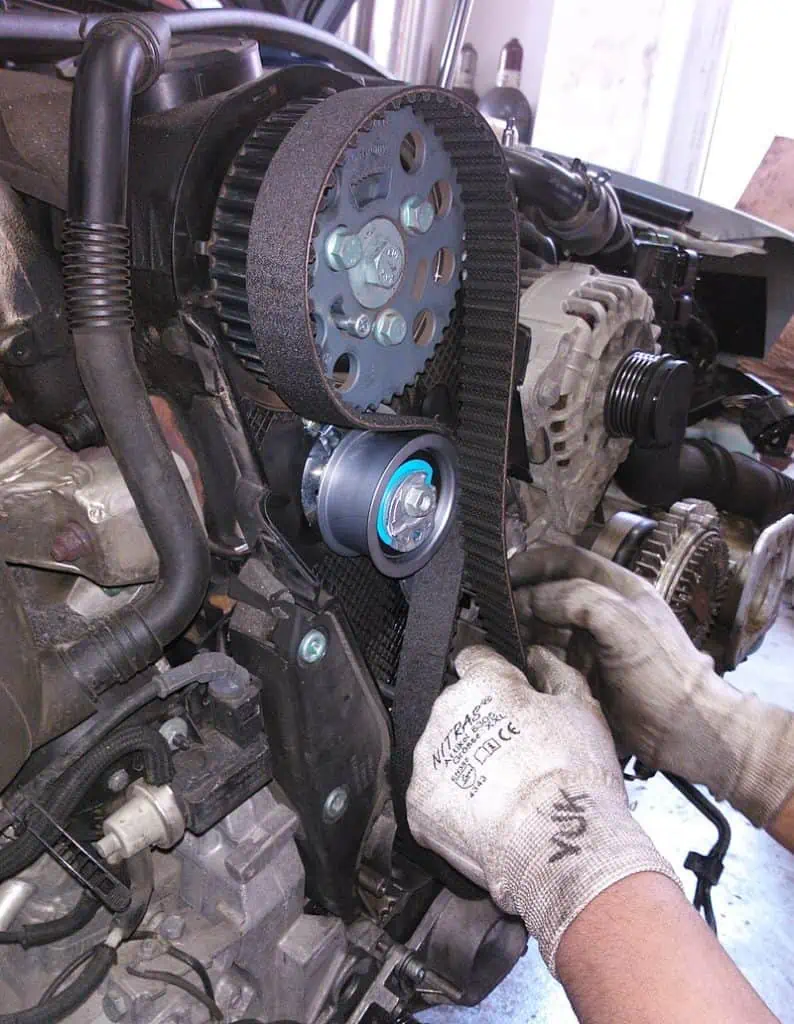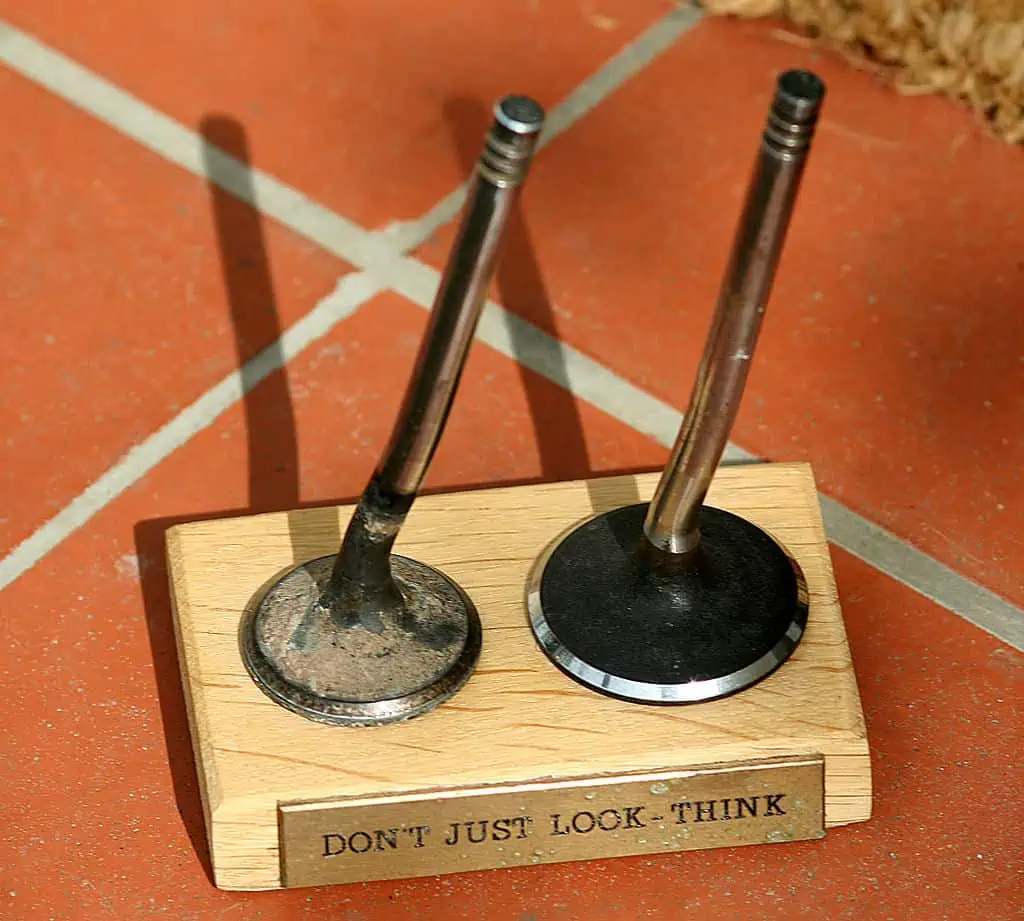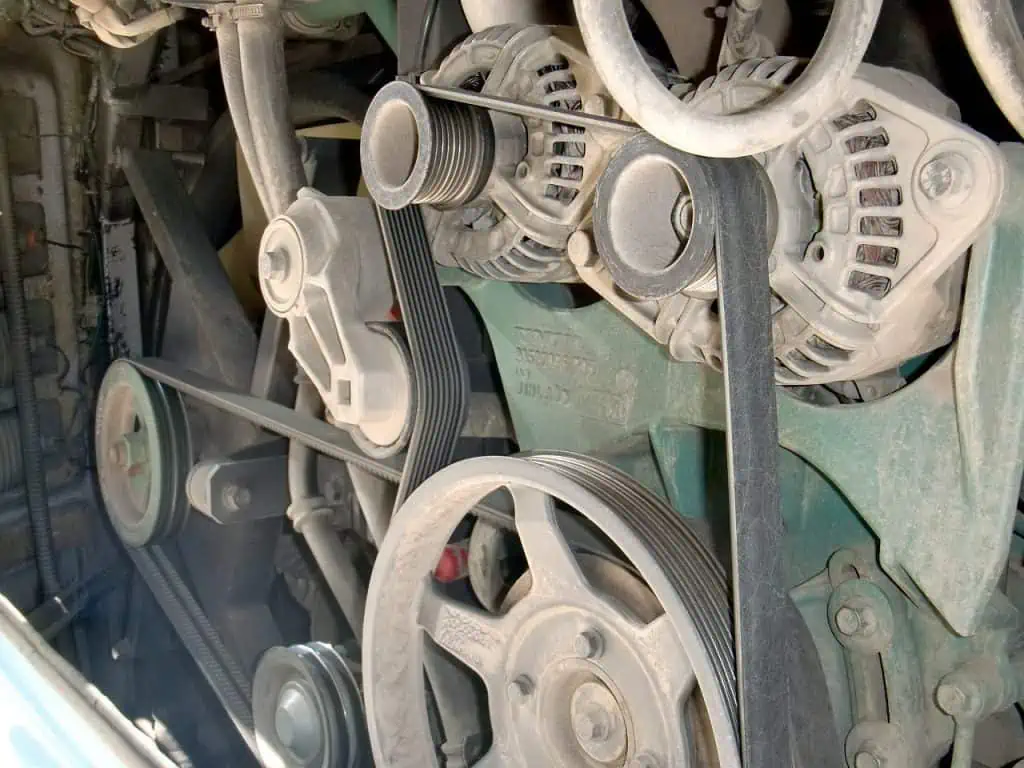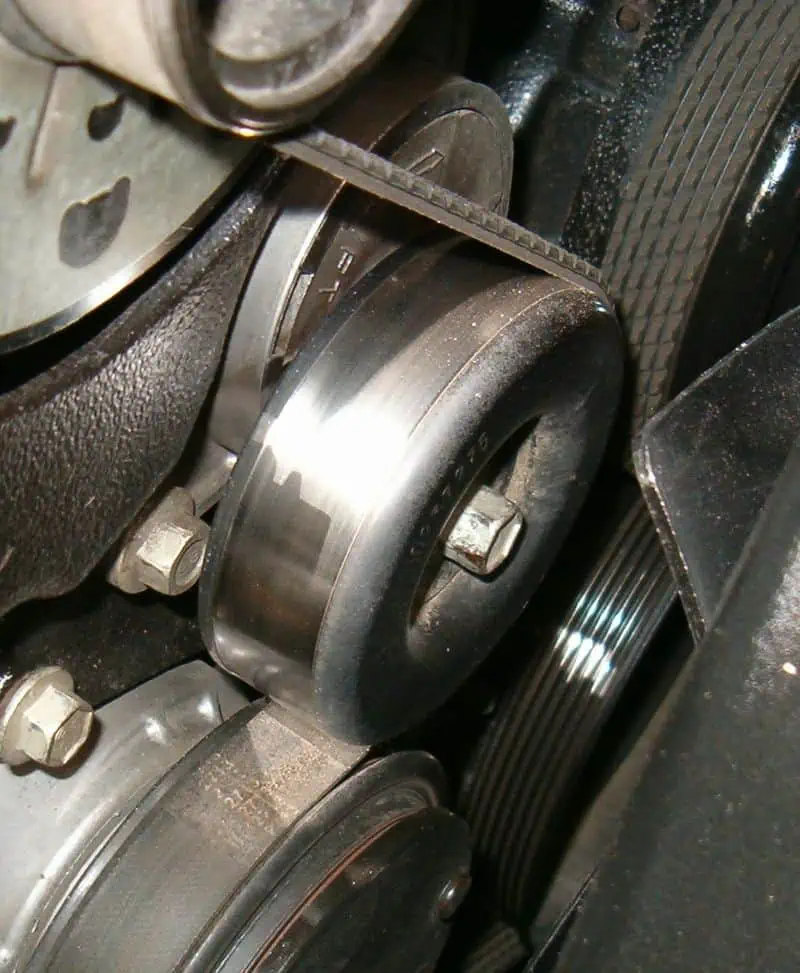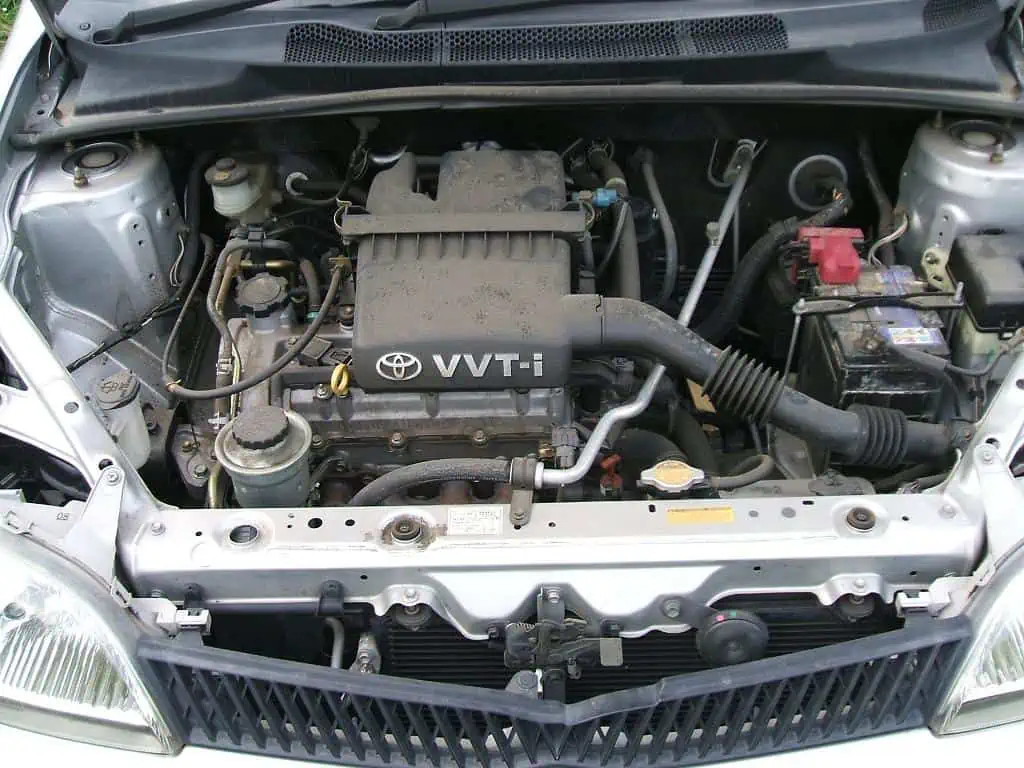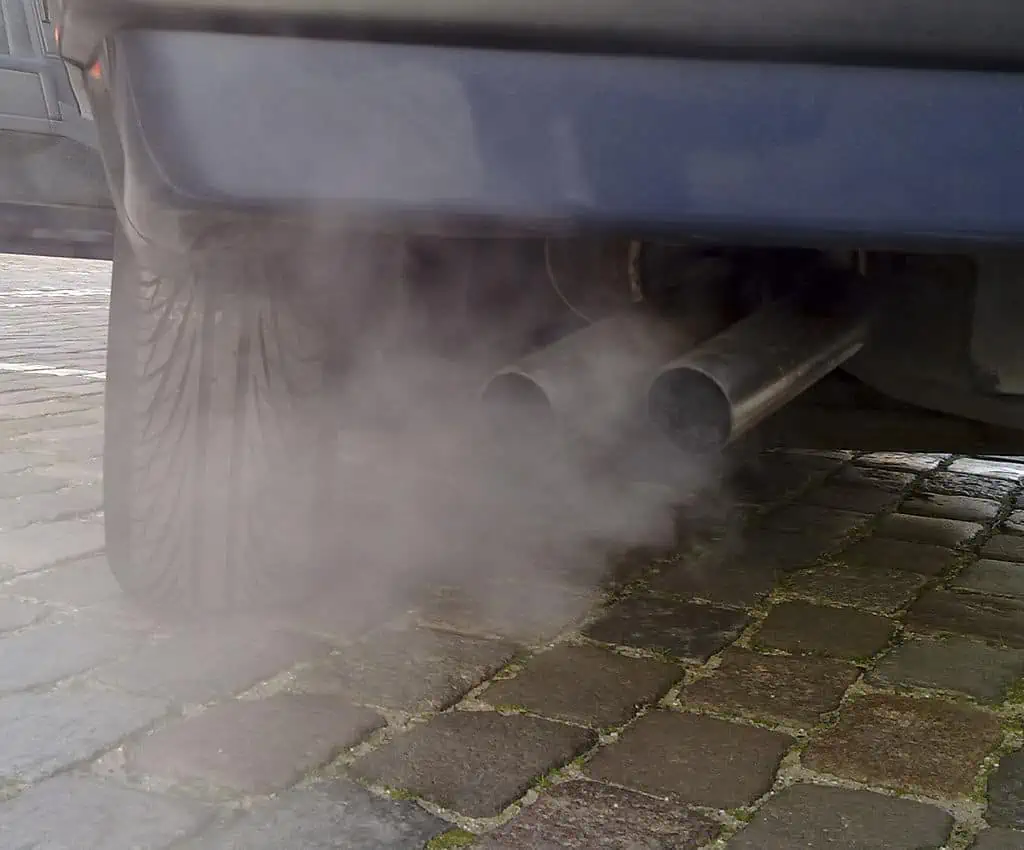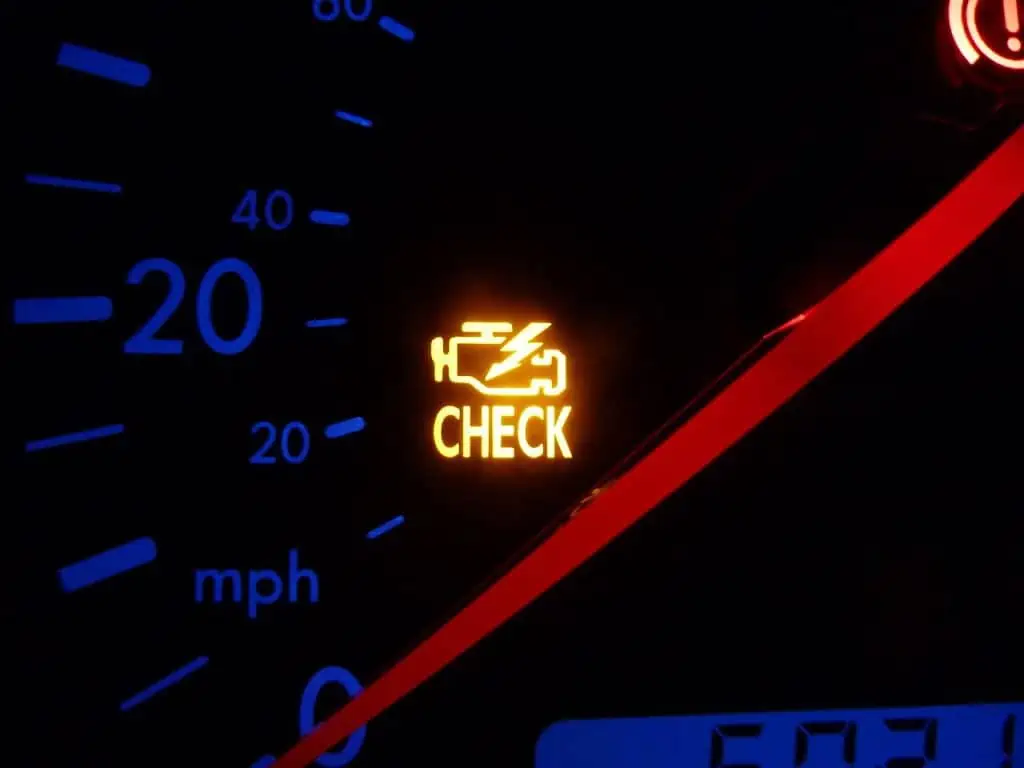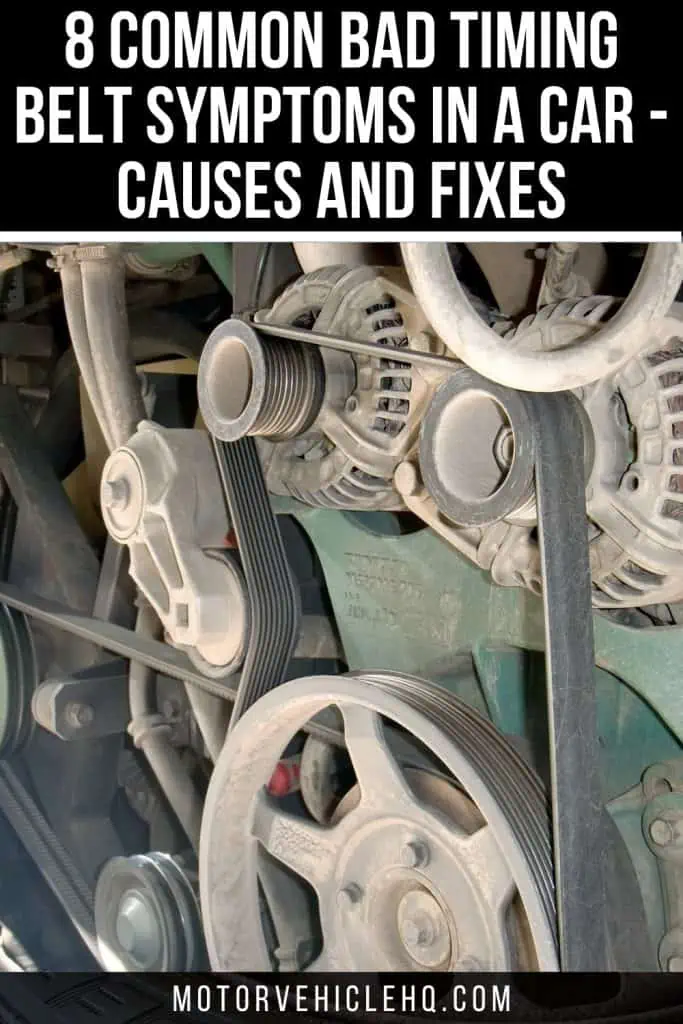Have you been noticing odd noises emanating from under the timing cover and are curious about the bad timing belt symptoms? If so, you’ve come to the correct spot because this topic, in which we’ll learn how to detect a damaged timing belt, will have a lot to cover.
One of the most crucial parts of your car is the timing belt. What makes me say this? Because it is true, of course. Your engine’s life is in grave danger if your timing belt isn’t functioning properly.
This belt’s functionality is essential to the engine. It’s not like the drive belt, which can withstand snapping. Your engine could quickly become useless if your timing belt breaks.
Therefore, you must be aware of this part and its significance when it comes to the operation of the engine, and we will assist you in doing so.
We will first discover what a timing belt is and its significance. The bad timing belt symptoms and how to identify a bad timing belt in your car are covered next. Next, we’ll talk about replacing the timing belt and its associated costs. So please continue reading if you want to learn more.
A Timing Belt: What Is It?
Now, before we examine the bad timing belt symptoms, we must first address a few crucial issues. This is necessary because a large number of readers of the post are unfamiliar with what a timing belt is.
The frequency of replacement as well as timing belt vs. serpentine belt. In the chapters that follow, we shall briefly discuss that before moving on to the symptoms.
However, a timing belt is a unique belt that is included in some automobiles. Timing chains are used in some autos, thus not all of them have them. These are the two concepts that are in opposition to one another. But they both do the same task—they connect the engine’s bottom-mounted crankshaft with its top-mounted camshafts.
A timing belt is being installed by Miya.m / CC BY-SA 3.0. One special belt found in some cars is the timing belt. Not all automobiles have timing chains since they are only used in part of them. The two ideas at odds with one another are these two. But they both perform the same function, which is to join the engine’s top-mounted camshafts to its bottom-mounted crankshaft.
It’s important to remember that timing belts are only employed in interference engines with overhead camshafts. This means that precise timing must constantly exist to prevent collisions between the pistons and valves.
A great deal of harm will result if they do. Timing chains, however, are employed in both interference and non-interference engines. I think you get my point.
The heavy-duty timing belt is made to withstand a lot of strain throughout its lifetime and guard against engine damage. Its teeth are rather large. And these teeth are vital to prevent the belt from slipping and causing you to lose timing.
You will be able to identify this belt by doing so. This belt is additionally attached behind the timing cover. But what precisely are the bad timing belt symptoms? Later, more on that.
Can Your Engine Be Ruined By a Timing Belt?
Before we discover the bad timing belt symptoms, let’s address another intriguing subject. And the question is if a timing belt can harm your engine or not.
And the quick answer to this is yes, if your timing belt snaps, your engine might be destroyed. Why is this the case, then?
This is the case since the timing belt, as its name suggests, is used to maintain proper engine timing. Therefore, it follows that the pistons’ and the valves’ alignment must always be flawless.
The piston ought to retract as soon as the valves open. After then, the piston should extend to its full length as the valves close. This entire procedure takes place in a split second.
The pistons and valves will therefore clash if the timing of this procedure is not precise. And you can probably guess what will happen when two pieces of metal meet.
The pistons will be harmed and the valve will bend. Even the cylinder walls can suffer damage from time to time. And when this occurs, the engine will end up in a junkyard.
Therefore, you should view timing belt replacement as a necessary procedure. You must understand how to interpret the bad timing belt symptoms to identify whether or not this belt is damaged.
But how often should this timing belt be changed? Well, more on that will be covered in the chapter after this one, where we’ll talk about all these replacement intervals and give you an idea of when it’s appropriate to replace your car.
What Occurs When Your Timing Belt Breaks?
Several things can go wrong if your timing belt fails. You won’t be able to shift gears if the camshaft or crankshaft teeth slip.
When the engine’s rotational speed slows down too much, the valves cannot close in time with the pistons. The pistons will effectively be stopped in their tracks as a result of the valves continuously banging into them.
For a similar reason, if the belt snaps, you won’t be able to start your car since there won’t be a strong vacuum in the intake manifold, which prevents air from reaching the cylinders.
Two valves bent due to broken timing belts by Raindrift / CC BY 2.0. When the valves open, the piston should retract. The valves should then close as the piston should then extend to its maximum length. This entire process happens in a single instant. If the timing of this action is not exact, the pistons and valves will collide. And you probably have a good idea of what will occur when two pieces of metal come together. The valve will bend and the pistons will suffer damage.
If the driver starts the vehicle after the belt has just broken, this may occur. Because there is no engine compression when they turn the key nothing happens.
The alternative scenario is that your belt loosens up as a result of wear, stretching, or object damage. If the belt gets loose, you could hear rattling coming from behind the hood as the valve train struggles to operate with it. If this occurs, shut off your engine right away to avoid severe internal damage.
At What Intervals Should a Timing Belt Be Replaced?
After learning about the timing belt and its significance, we now need to discuss another subject before moving on to the bad timing belt symptoms. And it is the time between timing belt replacements. When should your car’s timing belt be replaced?
Between 60,000 and 100,000 miles are the suggested distance between visits for this service. When it comes to performing this service on your car, this is the sweet spot. If you want to stop this belt from cracking, replacing it when it reaches 60,000 miles will be close to ideal.
The belt’s age is still another essential consideration. Rubber, which is what this belt is comprised of, can crack. Therefore, even if the belt hasn’t traveled 60,000 miles, you should expect some cracking issues to manifest. If the belt is older than seven years, replace it.
Another thing to note is that if you buy a secondhand car and don’t know when the belt was changed, you should replace it if you see that it’s discolored and starting to break. Before we tackle the bad timing belt symptoms, let’s talk about another issue.
Timing Belt Vs. Serpentine Belt: What Is the Difference?
Let’s first discuss the serpentine belt vs. timing belt debate before moving on to the bad timing belt symptoms. Or, as some might refer to it, a drive belt vs. a timing belt. What distinguishes these two belts from one another?
They are both belts, yet they have different functions in an automobile. But how can you distinguish between the two? Let me clarify.
A belt called the timing belt is located behind the timing cover. This implies that until you take off the cover to inspect the belt, it is not visible. Additionally, it aids to keep the engine running smoothly and at the right time.
However, when you open the hood, you can see the drive belt, also referred to as a serpentine belt. This belt will be visible going around several pulleys. like the AC, water pump, power steering pump, and alternator pulley. You see what I mean.
By transferring the rotational energy from the crankshaft, the serpentine belt powers the car’s accessories. And unlike the timing belt, which can cause engine damage, if this belt snaps, it won’t be a huge issue. But what precisely are the bad timing belt symptoms? Well, that is what we will discuss next.
Which are the Common Bad Timing Belt Symptoms In a Car?
Let’s now discuss the symptoms of a bad timing belt, or bad timing belt symptoms, as some people can refer to them.
A serpentine or timing belt by Miya.m / CC BY-SA 3.0. It’s crucial to keep in mind that only those engines with overhead camshafts use timing belts. This means that constant exact timing is required to avoid piston and valve collisions. If they do, it will cause a lot of damage. However, both interference and non-interference engines use timing chains.
How can you determine if your car’s seat belt has failed? What symptoms this component causes and can greatly simplify the diagnosing process? We’ll go into further detail in the next chapters.
1. A Check Engine Light Comes On
The check engine light is the first sign on our list of bad timing belt symptoms, so let’s get started.
The meaning of a check engine light is rather minimal. It suggests that there is an issue with your engine and that this issue needs to be fixed. Therefore, you must identify the issue and determine what is causing this light.
You’ll require an OBD2 scanner for this. Additionally, the scanner will allow you to identify the issue.
Unfortunately, because the timing belt is not connected to the computer, you will not receive any codes relating to it. You will typically receive a P0300 code, which denotes a random misfire. Or even some codes relating to the camshafts.
Therefore, it is up to you to establish if the timing belt is damaged or not based on these bad timing belt symptoms.
2. Unusual Sounds from the Timing Belt
The faulty timing belt sound is the following item on our list of bad timing belt symptoms that we’d like to discuss. also referred to as a ticking noise.
You can hear a ticking sound coming from the top of the timing cover whenever the timing belt has skipped.
Since you can hear that there is a problem inside the engine, this symptom is excellent for diagnosing the issue.
So, before it’s too late and the engine ruins itself, you should investigate what is creating this ticking sound and replace the timing belt. Let’s move on to the following list of bad timing belt symptoms.
3. Misfires In the Engine
Engine misfires are the next symptom on our list of bad timing belt symptoms that we’d like to talk about. What exactly are misfires, though?
Well, any form of combustion that isn’t correctly timed out might be thought of as a misfire. Therefore, it will be regarded as an engine misfire if there is a premature or delayed explosion inside the cylinder.
Ticks and pops and bangs can be heard at the exhaust pipe from these misfires when heard from the top of the engine.
Additionally, the P0300 code, which denotes sporadic misfires, will be present. Or any code that denotes a cylinder-specific misfire. For instance, P0303 denotes a misfire on cylinder number 3. So be alert for these subtly manifesting timing belt problems.
Belt tensioner and timing belt by Una Smith / CC BY 3.0. Another indication of a failing timing belt is an abnormal sound. likewise known as a ticking sound. Every time the timing belt skips, you can hear a ticking sound coming from the top of the timing cover. This symptom is great for figuring out the problem because you can hear that there is an issue inside the engine.
4. White Exhaust Smokes
The scenario with the white smoke coming from the exhaust is the next on our list of bad timing belt symptoms.
Timing issues in vehicles can cause heavy smoke. So, if you experience this problem with your car, you should take it as a sign that your timing belt needs to be replaced.
Primarily because it is directly related to engine misfires and poor camshaft performance. If the timing belt is missing a few teeth, the timing of the engine as a whole will be off. This will show that the timing was off by a few degrees. which, if you ask me, is a significant amount.
Therefore, if the engine smokes, you should visually examine the engine to check for belt damage. And that is what the following chapter on the bad timing belt symptoms will discuss.
5. The Belt Has Visible Damage
The obvious damage to the timing belt is the following on our list of bad timing belt symptoms. Timing can be skipped when a timing belt is defective.
If the timing belt is too worn out, you can anticipate that part of its teeth will be missing. Therefore, a thorough inspection is required to confirm that the belt is in good condition unless you want to risk irreparable engine damage.
Additionally, cracking is known to begin to form on certain timing belts. You should be concerned and replace your timing belt if you notice even a small crack.
Because the timing belt is concealed beneath the timing cover and most people never attempt to remove it to check on the condition of their belt, many consumers are unaware of these facts.
Therefore, we advise you to check the status of this component every 5,000 to 10,000 miles. Let’s now discuss the final sign of a faulty timing belt.
6. Damage to the Engine
Engine damage is the last sign on our list of bad timing belt symptoms. You don’t want this to happen to your car because it could cause minor engine damage in some instances or even result in your engine being sent to the junkyard.
What makes me say this? Because if the timing is off by a few degrees, sometimes the damage is just marginal. The automobile will misfire and smoke if a few valves are bent.
However, occasionally the belt will crack, destroying your engine from the inside out. Everything inside the cylinder will be mangled by the violent collision between the pistons and valves.
And to be honest, you don’t want to reach the point where the damage is too serious, and purchasing a new engine is the only option left. Be on the lookout for these bad timing belt symptoms. But what about changing the timing belt? Well, more on that in the chapter that follows.
7. Issues with Oil Pressure
The inside of your timing belt’s teeth will start to fall out and accumulate in the oil pan under your engine. They will eventually clog in the pan and stop the oil from properly filtering back through your engine.
A typical car engine by Carolla / CC BY-SA 3.0. As the pistons strike the closed valves, the engine will probably immediately lock up. This will cause your entire car to stall and may cause an accident, especially if it happens when you’re on the highway. If you are aware of a timing belt problem, you should take care of it right away before it endangers your safety and probably a more expensive repair.
This decrease in oil pressure could end up resulting in more serious harm to your engine or other issues like it overheating and seizing up. You may have to spend a lot of money to fix an overheated engine.
8. Overheating of the Engine
The engine’s cams and valves will become dry and heat up very rapidly if there isn’t enough oil circulating through them.
This could create failures in other parts of your car, such as the radiator fan and coolant pump, which would result in further damage. Additionally, other issues like burned pistons and blown head gaskets might result from overheating.
How Long Can I Keep Driving a Car with a Broken Timing Belt?
There is no safe period during which you can continue to drive with a timing belt that is exhibiting signs of wear or coming loose. It’s not like your engine is steadily overheating because your oil has to be replaced when the timing belt fails.
You won’t have the opportunity to safely pull over to the side of the road, identify the problem, and then call a mechanic or tow truck to fix it for you.
Your timing belt will break down suddenly. Your engine will cease working when your timing belt fails. You don’t have time to react to this.
Your engine will probably quickly seize up as the pistons collide with the closed valves. Especially if it occurs when you’re on the highway, this will cause your entire automobile to stall and may result in an accident.
Therefore, if you are aware of a timing belt issue, you should treat it as soon as you can before it poses a risk to your safety and necessitates a more costly repair.
Replacement of the Timing Belt
The bad timing belt symptoms have been discussed. Let’s now talk about replacing the timing belt. When it comes to this kind of belt, there is still another crucial matter that you should be aware of. So, when is it necessary to replace this?
When the timing belt has traveled more than 60,000 miles or is between 5 and 7 years old, it must be replaced. The belt should be checked out and inspected for damage when it reaches these figures.
A new belt needs to be purchased if the existing one has developed cracks and has teeth that are missing. Waiting for the bad timing belt symptoms to appear is not advisable. Before then, replace this belt. In the long run, it will be a lot simpler for you because you’ll avoid having your car’s engine completely fail.
It’s also important to note that replacing this belt is not a task for beginners. Only the most skilled mechanics are given these tasks because you can only complete this type of work properly. Or the engine will self-destruct if you do it incorrectly.
This is why we wouldn’t advise beginners to do this repair because the likelihood of your engine being destroyed is significant. Nevertheless, if you adhere to the instructions, install the engine, and properly align the crankshaft and camshaft with the suggested marks, you should be good to go.
White exhaust smoke by Ruben de Rijcke / CC BY-SA 3.0. White smoke coming from the exhaust is an indication of a damaged timing belt. Heavy smoke in automobiles might be caused by timing problems. Therefore, you should consider this issue with your car as a symptom that your timing belt needs to be replaced.
However, this work still needs experience, so not just anyone can accomplish it. You must have at least a year’s worth of experience working on cars and have a solid comprehension of how the mechanical parts interact. However, you can head to YouTube and watch an illustrative video if you want to observe how this treatment is carried out.
How Much Is the Cost of Replacing the Timing Belt?
After discussing the bad timing belt symptoms, let’s assume that your timing belt is worn out and needs to be changed. How much should you budget to spend on this auto part replacement?
The price range for replacing a timing belt is between $500 and $800. But given that the component is around $100, why is it so expensive?
Well, the cost of labor is the reason why this is the case. Additionally, the timing belt is typically not the sole issue. Additionally, the water pump and tensioner need to be changed. As a result, replacing the timing belt and water pump is expensive.
Since you are already there conducting this job, replacing this pump is very important. It is also a good idea because it may fail and bring you a lot of issues.
Additionally, the price of timing belt repairs is a common question. How much money should you plan to spend in case your belt breaks? In the best-case scenario, you’ll simply have to pay for the replacement component. In the worst-case scenarios, though, you could need to replace or extensively repair your engine. anything that occasionally costs more than $3,000
Why Is It Essential to Replace Your Timing Belt On Time?
A vital component of your car’s engine, timing belts can seriously harm vital parts like pistons, valves, and camshafts if they are neglected.
For instance, if your car’s timing belt is failing, there’s a considerable probability that it has already begun to wear down other engine components, which could cause overheating and oil leaks.
It’s not difficult to replace a timing belt, but it’s crucial to do it when necessary for the health of your engine.
Is It Lawful to Change a Timing Belt On Your Own?
As long as you possess the required information and training, you are permitted to change a timing belt. For more information, you might wish to refer to your owner’s manual or speak with someone in the auto business.
If replacing a timing belt is still on your list of worst fears, be sure to have a copy of this article handy so you’ll know exactly what to watch out for when it’s time for a replacement.
Check out these crucial pointers for maintaining your automobile in top condition for more information on how to get the most out of your vehicle.
A check engine light warning by Wikiuser100000 / CC BY-SA 3.0. The first indication of a damaged timing belt is almost often the check engine light. A check engine light has very little meaning. It implies that your engine has a problem, and that problem needs to be rectified. As a result, you must pinpoint the problem and ascertain what is resulting in this light.
What Is the Lifespan of a Timing Belt?
The length of time a non-interference engine lasts depends on how frequently you drive your vehicle. It will typically last five years before it starts to wear down, but that will depend on how much you drive and whether any other engine components have recently been replaced.
Contrarily, interference engines’ timing belts last for about 4-6 years or 50,000–100,000 miles. You face the risk of your pistons hitting valves and seriously damaging your internal engine, which can be very expensive to repair if this belt breaks.
Which are the Available Alternatives In Place for a Timing Belt?
Although timing belts are currently the most popular way to control an engine’s timing, there are several additional options you might wish to take into account.
The chain-driven system is similar to a standard belt, but instead of rubber or plastic cords, it uses metal links. But chains must typically be replaced after 100 000 miles (about the same amount of time as a rubber timing belt), and this can cost up to $400 each time.
Unlike belts and chains, which are more popular and less expensive, certain systems use gears instead of cogs.
The Conclusion
In terms of bad timing belt symptoms, we’ve covered a lot in this post. The timing belt’s definition and how it differs from the serpentine belt were first covered. Moreover, what might occur if these belts break?
Then, we discovered the bad timing belt symptoms and the primary signs of a broken belt. The replacement of the timing belt and its cost were then discussed.
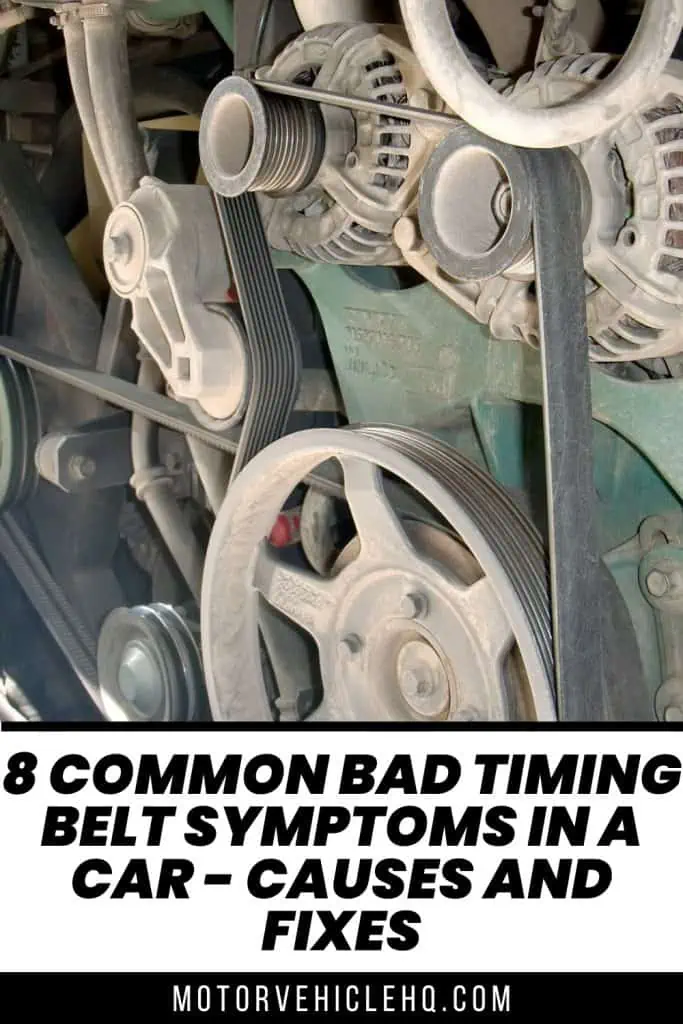
A serpentine or timing belt by Miya.m / CC BY-SA 3.0

Jim Wicks is the founder of MotorVehicleHQ. With over two decades of experience in the automotive industry and a degree in Automotive Technology, Jim is a certified car expert who has worked in various roles ranging from a mechanic, car dealership manager, to a racing car driver. He has owned more than 20 cars over the past 15 years. Ask him about any vehicle you see on the road and he can tell you the make, model and year. He loves the aesthetics of all things cars, and keeps his vehicles in pristine condition.
In his free time, Jim enjoys getting his hands dirty under the hood of a classic car or taking long drives along the country roads. His favorite car? A 1967 Shelby GT500, a true classic that, according to Jim, “represents the pure essence of American muscle.”
